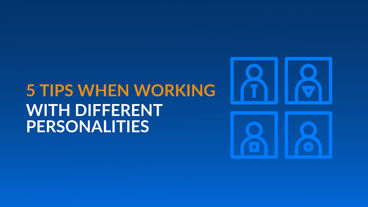![Identify and Prevent Employee Burnout [Infographic] Identify and Prevent Employee Burnout [Infographic]](https://image.lorman.com/article/blog/tr:w-800,h-450/68_Identifying%20Employee%20Burnout.png)
Identify and Prevent Employee Burnout [Infographic]
Posted on 10/05/20 By Brittany K. King
A common buzzword in the corporate world is 'employee burnout'. The phrase is often minimized to describe to an employee who may temporarily feel annoyed and agitated, or just simply has a lot of work on their plate.
However, this downplayed definition of employee burnout is downplayed entirely. Burnout is a real and serious condition professionals face every day, and was even added to the International Classification of Diseases by The World Health Organizations (WHO).
Below is the official definition of burnout, according to WHO:
"Burnout is a syndrome conceptualized as resulting from chronic workplace stress that has not been successfully managed. It is characterized by three dimensions: 1) feelings of energy depletion or exhaustion; 2) increased mental distance from one’s job, or feelings of negativism or cynicism related to one's job; and 3) reduced professional efficacy. Burnout refers specifically to phenomena in the occupational context and should not be applied to describe experiences in other areas of life."
The Effects of Employee Burnout
Since burnout is a diagnosable condition, employers have begun to notice the effects of the syndrome in the workplace. According to Forbes, burnout costs between $125 billion and $190 billion in healthcare costs every year.
Gallup performed a study of nearly 7,500 full-time employees which examined 15 workplace factors that correlate highly with employee burnout.
Employees who suffer from burnout are:
- 63% more likely to take sick days
- 2.6 times as likely to leave their current job
- Half as likely to discuss performance goals with their supervisor
Overall, Gallup reports 23% of employees reported feeling burned out at work very often or always.
Preventing Burnout
To avoid employee burnout in the workplace, leaders and management must focus on ways the company can help employees feel happier and less stressed at work.
There are several ways employers can prevent employee burnout, such as:
- Shifting company culture to focus on employee well-being
- Training management to recognize and address burnout
- Supporting and encouraging individual self-care
- Working to improve inter-company relationships
But how can managers know for sure if their employees are experiencing burnout? Keep scrolling to see common signs of employee burnout:
.png)
Related Articles
Different personality types require different leadership styles and communication if a cohesive working environment is to be achieved.
The 2021 tax season begins February 12th and ends April 15th. To help you prepare for tax season, we compiled 30 of the best accounting and tax preparation courses.
A corporate credit card is intended for use by businesses, not for personal use. Employers hand out corporate credit cards for employees who routinely withdraw cash or need access to the company's credit line for major purchases.


